Physical Address
304 North Cardinal St.
Dorchester Center, MA 02124
Aneurysm of the aorta in one of its segments or in its entirety may require replacement of the aorta. The need for operation is determined by the size of the aneurysm and the accompanying risk of rupture, occlusion of the aorta or its branches, thromboemboli originating from the aortic wall, or infection.

Multiple cannulation techniques are available for cardiopulmonary bypass during aortic operations. Alternative techniques, such as partial cerebral perfusion, can make the operative field more accessible during complex reconstructions.
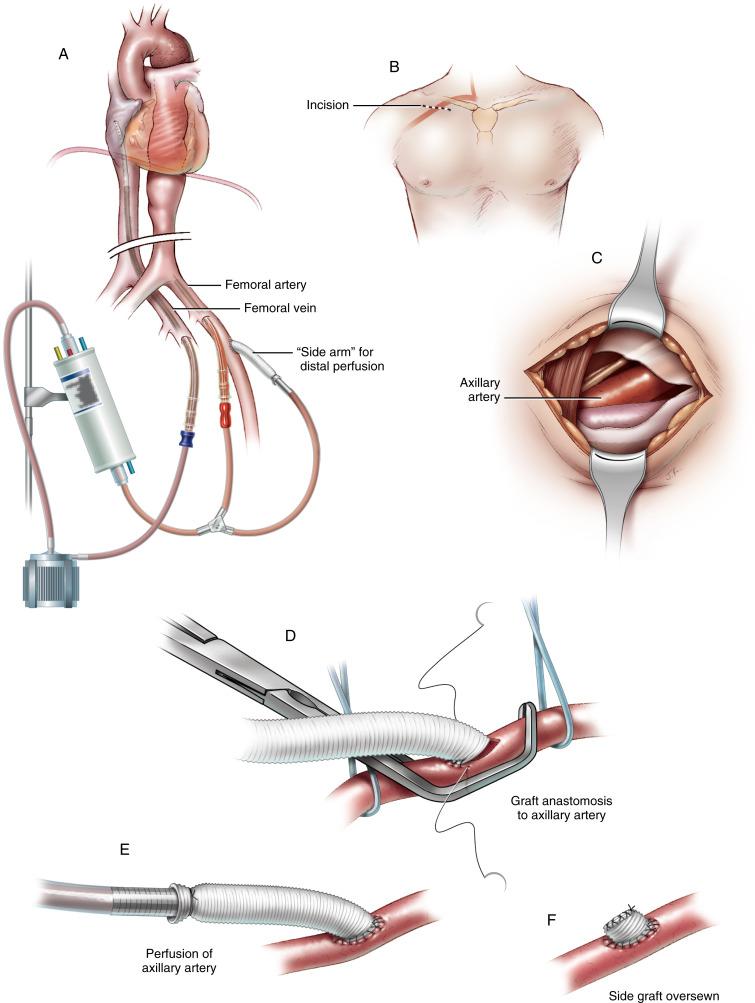
Ascending aortic aneurysm or dissection is repaired by replacing the ascending aorta with a prosthetic graft. Placement of the arterial cannula in the proximal aortic arch facilitates placement of the cross-clamp and construction of the distal aortic anastomosis. If the aneurysm approaches the innominate artery, use of the hemiarch technique may be necessary to extend the repair and effectively resect all aneurysmal tissue. The hemiarch technique is also useful for the repair of acute aortic dissection.
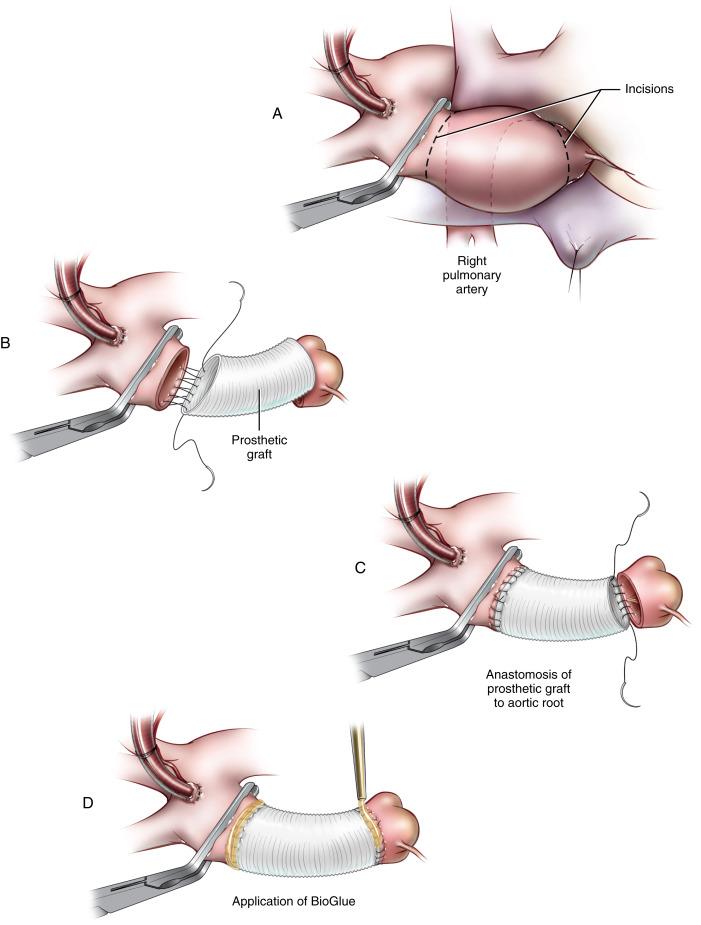
Concomitant replacement of the ascending aorta and the aortic root is necessary when there is combined disease. Aortic dissection that extends deep into the aortic root, rendering the aortic valve unrepairable, is an indication for replacement of both the ascending aorta and the aortic root. Another common indication is aortic valve incompetence due to root dilation from aneurysmal disease, such as that associated with Marfan syndrome. An additional indication is a bicuspid aortic valve with associated dilation of the ascending aorta. Durable repair is achieved with the use of either a composite mechanical valved conduit or a tissue aortic root bioprosthesis and a prosthetic graft.
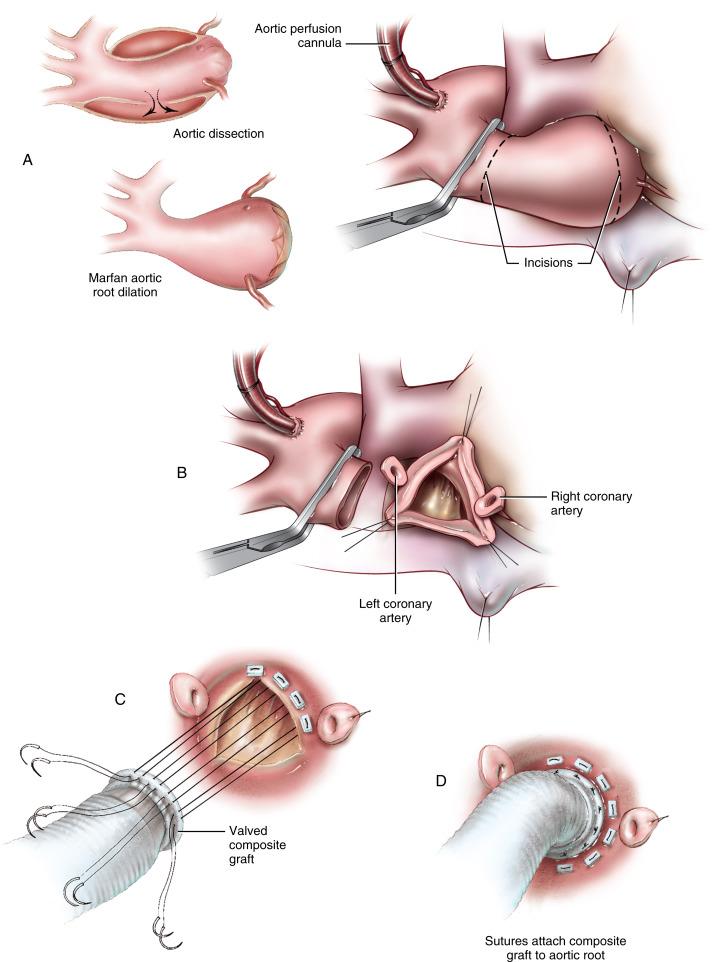
Reconstruction of the aortic arch may be necessary for atherosclerotic aneurysm or dissection of the aorta that extends into the arch, making repair impossible or inadvisable proximal to the innominate artery. This region was once accessible only with great difficulty and risk using continuous-flow cardiopulmonary bypass techniques. The application of circulatory arrest with the patient under deep body hypothermia has made the aortic arch much more accessible.
Atherosclerotic disease with aneurysm of the ascending aorta may extend into the aortic arch. There may be ulcerated atherosclerotic plaques in the aorta, placing the patient at risk for intraoperative stroke due to atheroemboli. Addressing this risk factor during ascending aorta and partial arch (hemiarch) replacement should improve survival and reduce neurologic comorbidity.
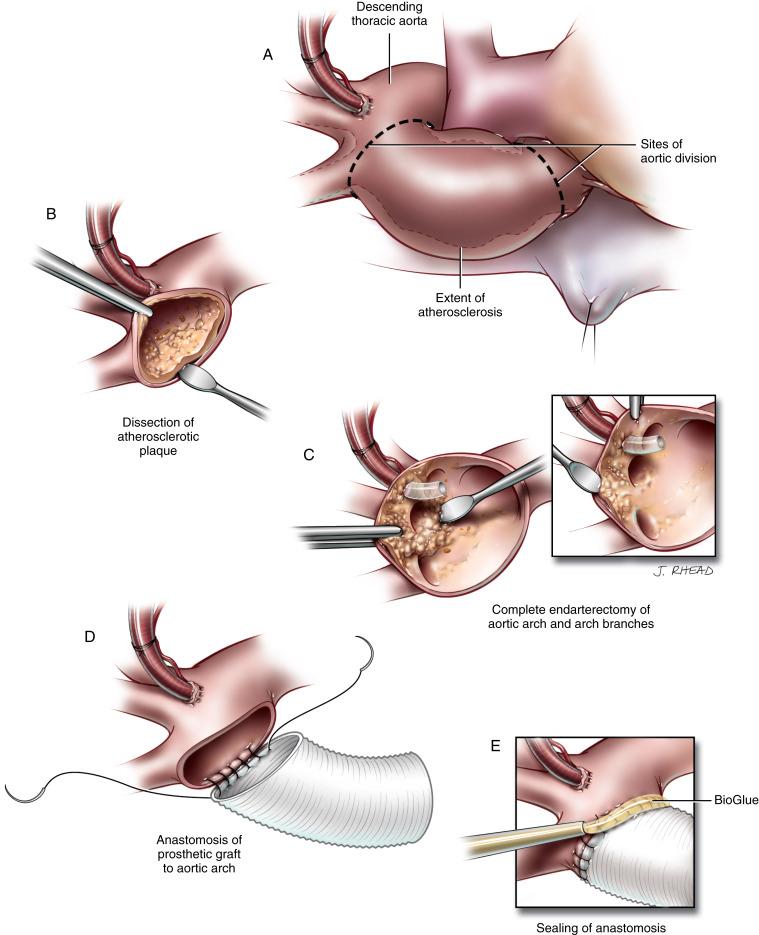
Occasionally, aneurysmal disease of the ascending aorta is associated with normal aortic valve cusps and no dilation of the aortic valve annulus. It may be possible to preserve aortic valve function in this situation. The principles of repair are based on techniques described by Yacoub and David and on aortic root dimensions detailed by Kunzelman.
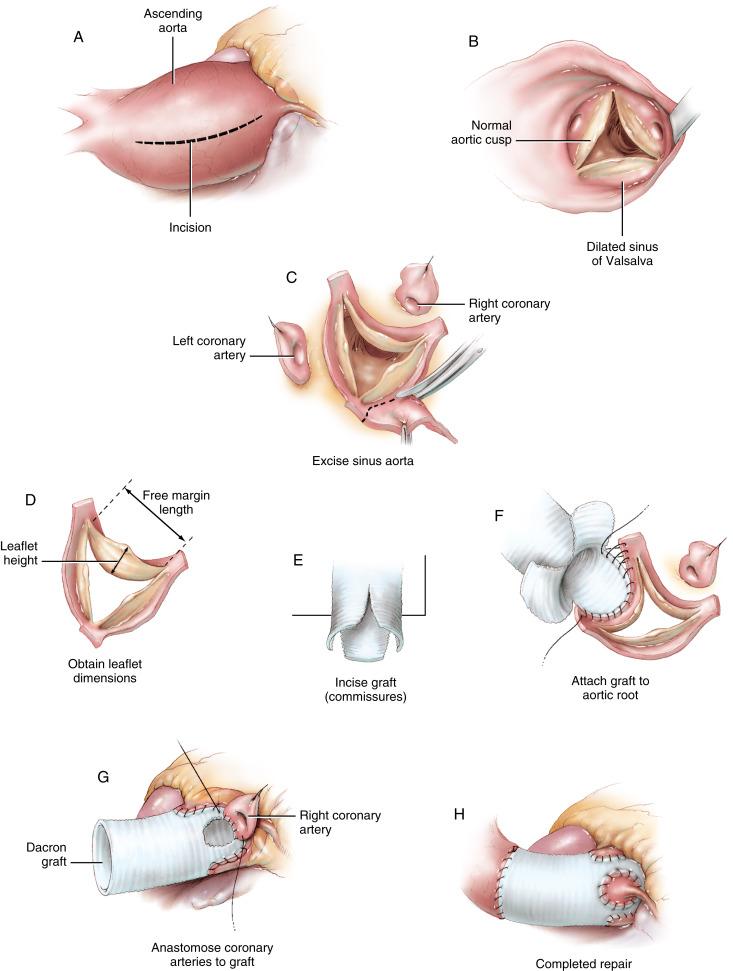
Become a Clinical Tree membership for Full access and enjoy Unlimited articles
If you are a member. Log in here